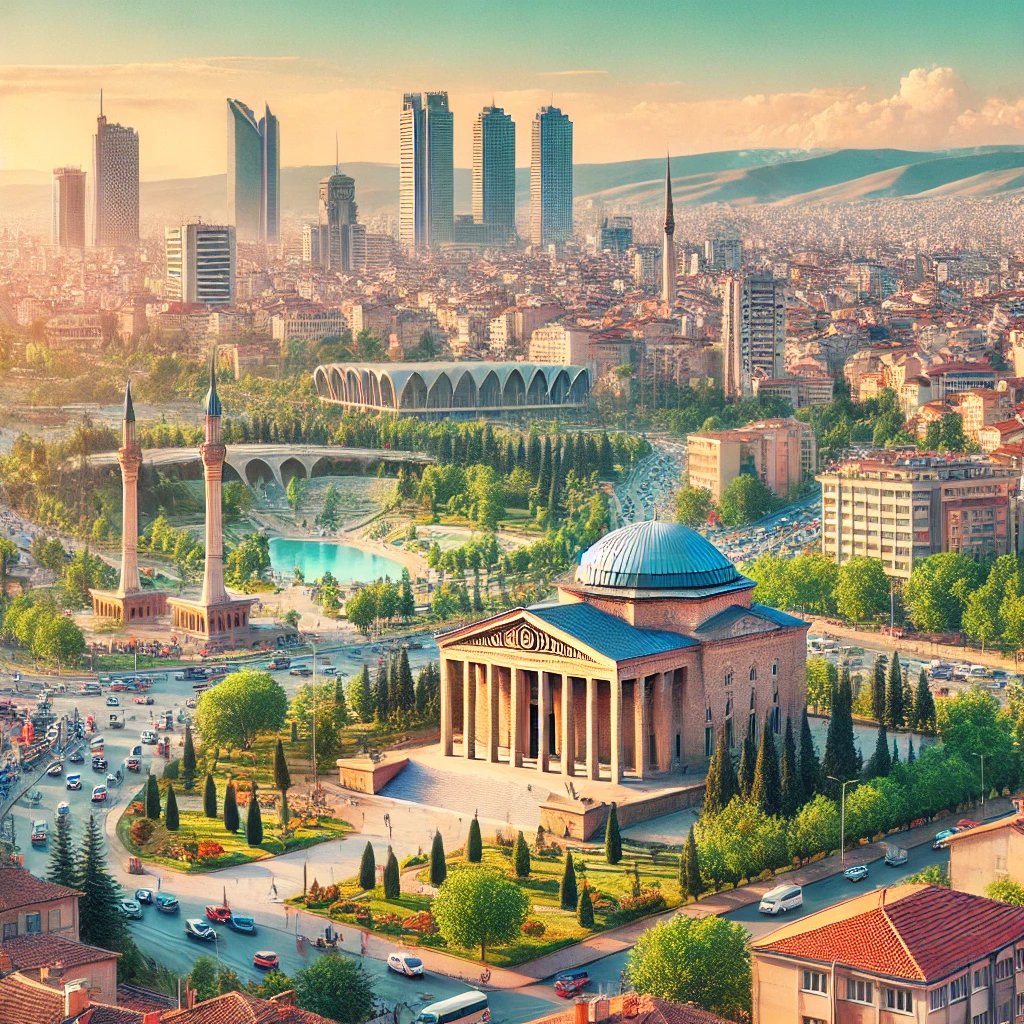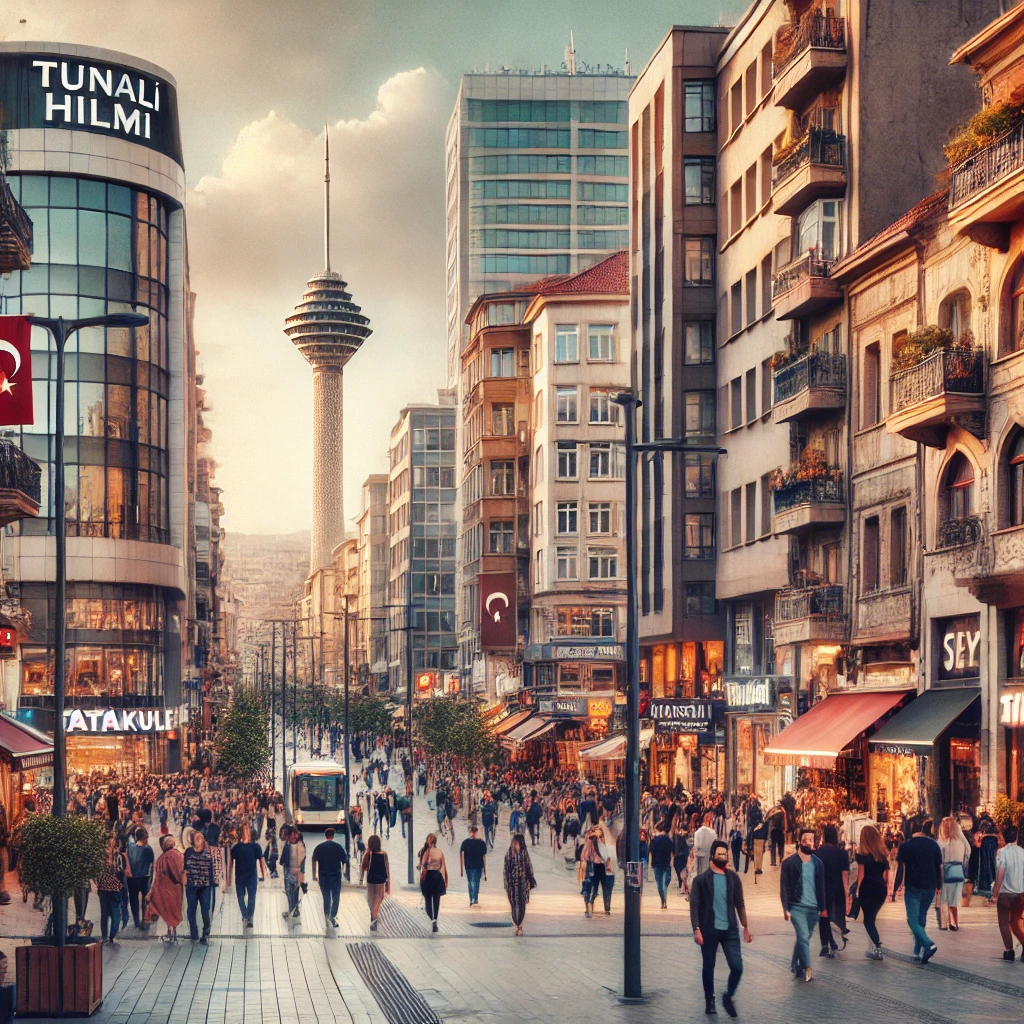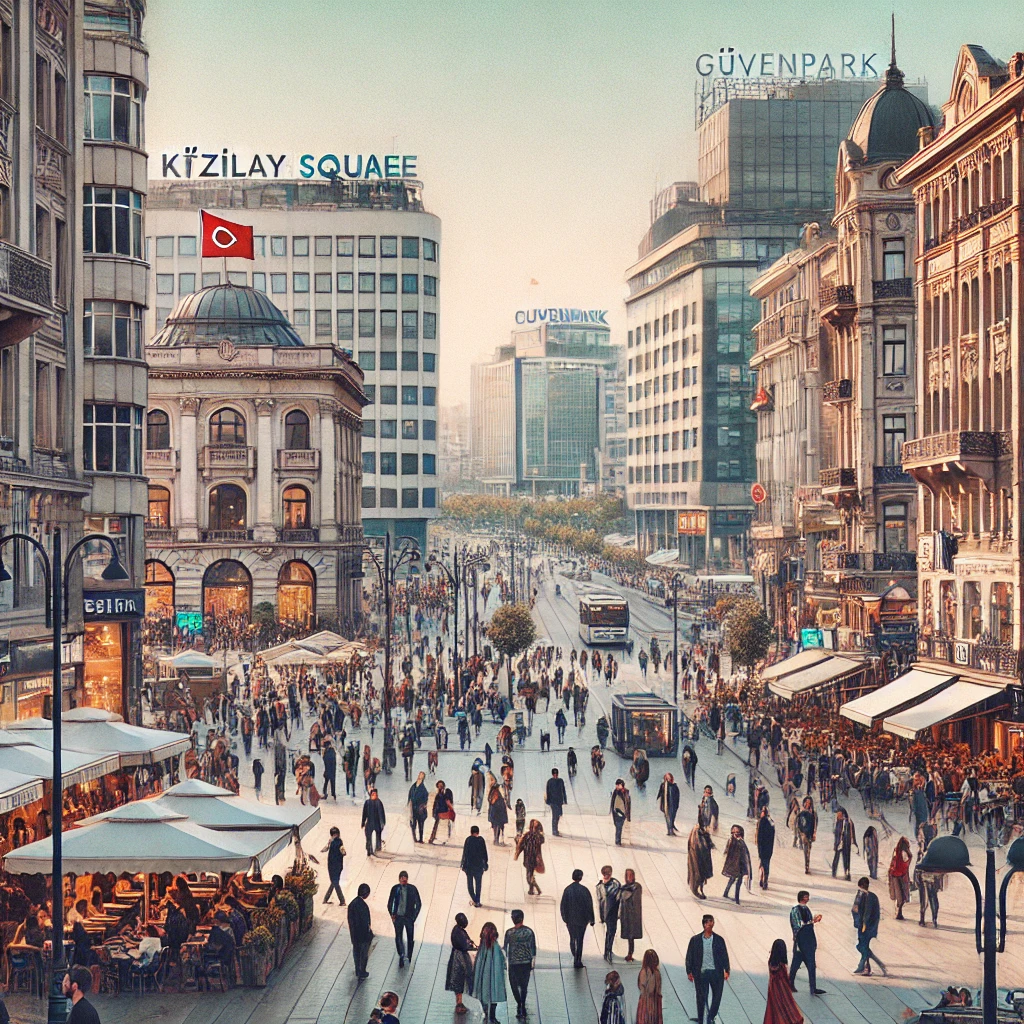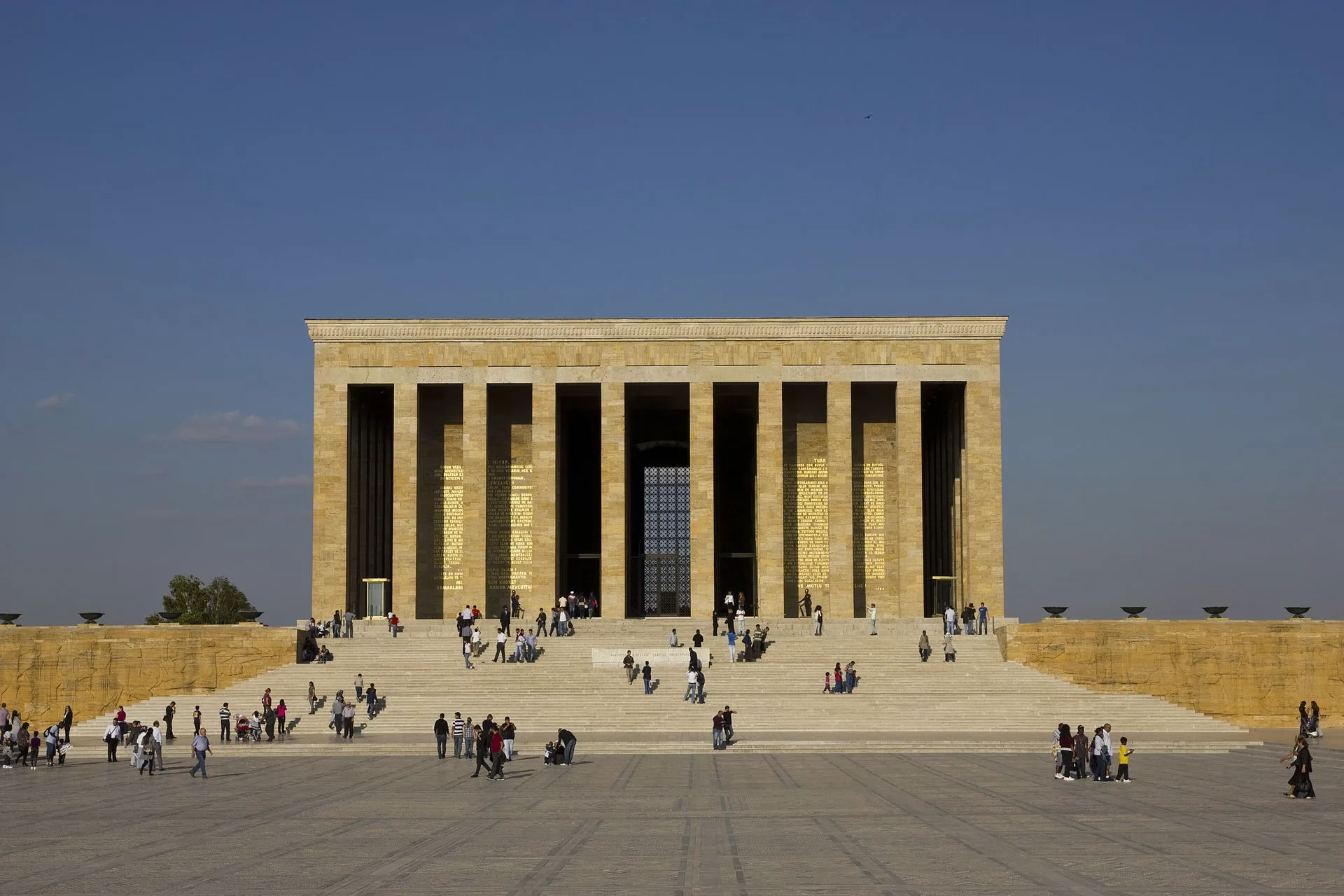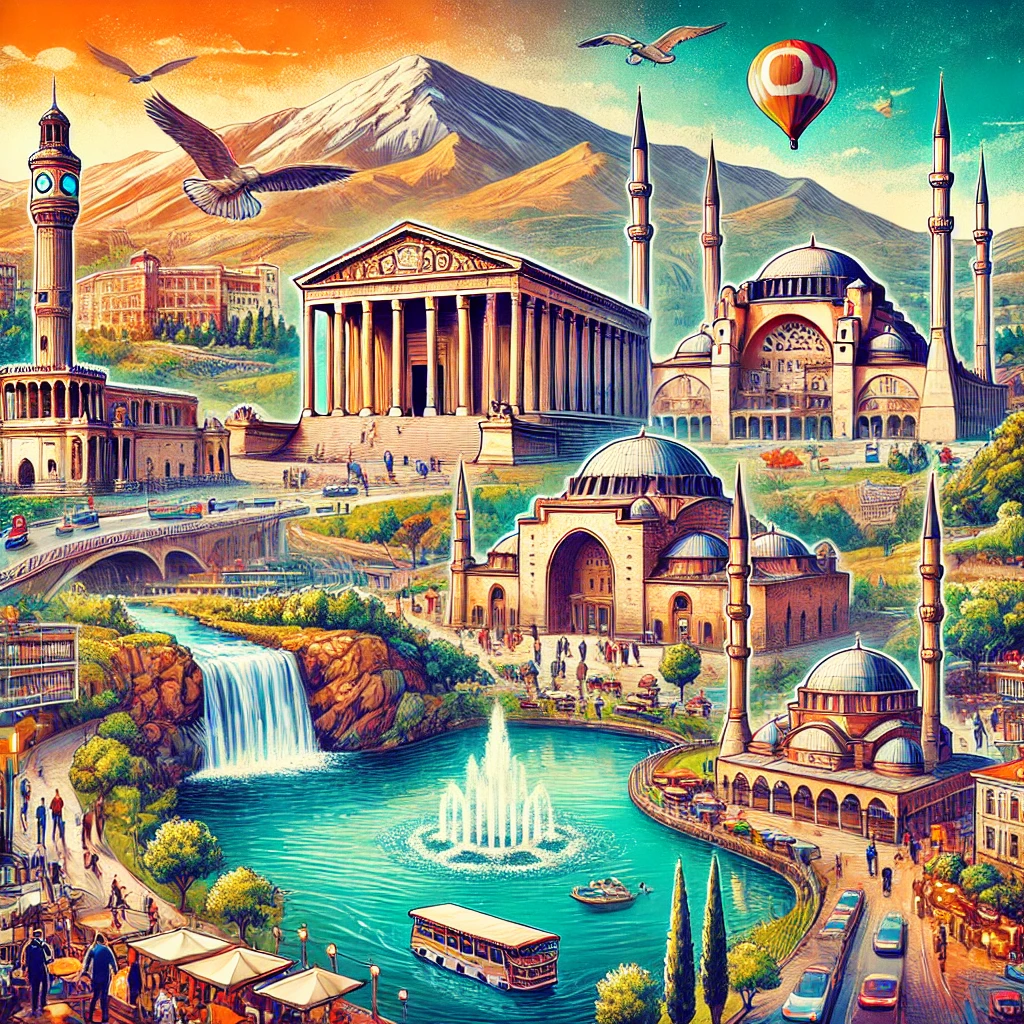Discovering Ankara: A Blend of History and Modernity
Ankara, the vibrant capital of Turkey, is a city that seamlessly blends its rich historical heritage with modern advancements. Located in the northwestern part of the country, about 200 km south of the Black Sea, Ankara stands as a testament to Turkey’s storied past and its dynamic future. This article delves into the multifaceted aspects of Ankara, from its ancient roots to its contemporary significance, providing travel enthusiasts with a comprehensive guide to exploring this fascinating city.
A Glimpse into History
Ancient Roots
Ankara’s history dates back to the Stone Age, with archaeological evidence indicating continuous habitation since prehistoric times. By the end of the 2nd millennium BCE, the area was home to a thriving Phrygian town. In 333 BCE, Alexander the Great conquered Ankara, which later became the capital of the Tectosages, a tribe of Galatia. The city was incorporated into the Roman Empire in 25 BCE by Emperor Augustus.
Byzantine and Seljuq Eras
Throughout the Byzantine period, Ankara was a significant urban center, enduring attacks from Persians and Arabs. The city fell to the Seljuq Turks around 1073 but was recaptured by the Crusader Raymond IV of Toulouse in 1101. Despite intermittent control by the Byzantines, Ankara predominantly remained under Seljuq influence until it became part of the Ottoman Empire in 1354.
Ottoman Influence
Under Ottoman rule, Ankara flourished as a commercial hub due to its strategic location on the caravan route to the East. The city’s importance was further solidified after World War I when Mustafa Kemal Atatürk chose Ankara as the headquarters for the Turkish resistance movement. In 1923, Ankara was officially declared the capital of the Republic of Turkey, marking a new era in its history.
The Contemporary City
Architectural Marvels
Ankara’s architecture is a rich tapestry reflecting its diverse history. Notable Roman remnants include the Temple of Roma and Augustus, the Column of Julian, and ancient baths. The Byzantine period is represented by the citadel and an old cemetery. The Seljuq era’s influence is seen in the Alâeddin Mosque, while numerous Ottoman buildings, such as the Hacı Bayram Cami and the Mahmud Paşa market, highlight the city’s Islamic architectural heritage.
Modern Landmarks
The modern skyline of Ankara is dominated by the Atatürk Mausoleum, a monumental complex dedicated to Turkey’s founding father. The city also boasts contemporary structures like the Presidential Symphony Orchestra building and various government offices, reflecting Ankara’s role as the political heart of Turkey.
Cultural and Educational Hub
Universities and Libraries
Ankara is home to several prestigious universities, including the University of Ankara, Hacettepe University, and the Middle East Technical University. These institutions contribute to the city’s vibrant academic atmosphere. The National Library of Turkey, located in Ankara, serves as a significant repository of the nation’s literary and historical treasures.
Museums and Theatres
Ankara’s museums offer a panoramic view of Anatolian history. The Museum of Anatolian Civilizations, with its world-renowned Hittite collection, and the Ethnographic Museum, showcasing Turkish folklore and art, are must-visit destinations. The city is also a hub for performing arts, with the state theatre and the Presidential Symphony Orchestra offering regular performances.
Economic Significance
Industrial Growth
Ankara is Turkey’s second most important industrial city after Istanbul. The city’s industries include the production of wine, beer, flour, sugar, macaroni products, biscuits, milk, cement, construction materials, and tractors. The service and tourist industries are also rapidly expanding, contributing to Ankara’s economic vitality.
Trade and Transportation
Ankara is a crucial crossroads for trade, forming a major junction in Turkey’s road network. The city lies on the main east-west rail line across Anatolia, facilitating efficient transportation. Esenboğa Airport, located to the northeast, offers international services, connecting Ankara to the global community.
Exploring Ankara: Tips for Tourists
Respecting Local Culture
When visiting Ankara, it’s essential to show respect for local customs and traditions. Engage with locals politely, dress modestly when visiting religious sites, and be mindful of local etiquette.
Discovering Culinary Delights
Step outside your culinary comfort zone and savor traditional Turkish dishes. Ankara’s cuisine offers a variety of flavors, from delicious kebabs to mouthwatering baklava. Exploring local eateries and street food vendors will provide an authentic taste of the city.
Visiting in the Off-Season
To avoid the crowds and enjoy a more relaxed experience, consider visiting Ankara during the off-season. This period offers more affordable accommodations and a chance to explore the city’s attractions without the hustle and bustle of peak tourist times.
Engaging in Sustainable Tourism
Understand the impact of your visit on the local environment and community. Support eco-friendly hotels, use public transportation, and participate in tours that promote sustainable practices. Respecting the city’s natural and cultural heritage ensures that Ankara remains a beautiful destination for future generations.
Must-Visit Attractions
Atatürk Mausoleum (Anıtkabir)
Anıtkabir is the final resting place of Mustafa Kemal Atatürk, the founder of modern Turkey. The mausoleum complex is an architectural masterpiece, featuring a museum that displays Atatürk’s personal belongings and documents significant moments in Turkish history.
Museum of Anatolian Civilizations
This museum is housed in a restored Ottoman building and offers an extensive collection of artifacts from various Anatolian civilizations, including the Hittites, Phrygians, and Urartians. It provides a comprehensive overview of the region’s rich history.
Ankara Castle
Perched on a hill overlooking the city, Ankara Castle offers panoramic views and a glimpse into the city’s ancient past. The castle’s walls enclose a historic district with narrow streets, traditional houses, and artisan shops.
Hacı Bayram Mosque
Built in the 15th century, Hacı Bayram Mosque is one of Ankara’s most significant religious sites. It is located near the ruins of the Temple of Augustus, highlighting the city’s historical layers. The mosque complex includes the tomb of Hacı Bayram Veli, a prominent Sufi saint.
Roman Bath
The Roman Bath in Ankara dates back to the 3rd century AD and offers insight into the Roman way of life. The well-preserved ruins include a frigidarium (cold room), tepidarium (warm room), and caldarium (hot room), showcasing the sophistication of ancient Roman engineering.
Ethnographic Museum of Ankara
This museum is dedicated to Turkish culture and folklore. It houses a rich collection of artifacts, including traditional costumes, weapons, and household items, providing a window into the daily lives of Anatolian people through the ages.
Experiencing Ankara’s Natural Beauty
Gençlik Park
Gençlik Park is a vast green space in the heart of Ankara, offering a peaceful retreat from the city’s hustle and bustle. The park features a large pond, walking paths, and recreational facilities, making it an ideal spot for relaxation and leisure activities.
Atatürk Forest Farm and Zoo
This expansive area includes a zoo, greenhouses, dairy farms, and breweries. Established by Atatürk, it serves as a recreational and educational space where visitors can enjoy nature and learn about agriculture and animal husbandry.
Eymir Lake
Located just outside the city, Eymir Lake is a popular destination for outdoor enthusiasts. The lake offers opportunities for rowing, cycling, and picnicking, surrounded by scenic landscapes and serene natural beauty.
Shopping in Ankara
Kızılay
Kızılay is the commercial heart of Ankara, bustling with shops, cafes, and restaurants. It is an excellent place for shopping, dining, and experiencing the city’s vibrant urban culture. The area also features several modern malls and traditional markets.
Çıkrıkçılar Yokuşu
Known as the “Antique Dealers’ Street,” this historic area is lined with shops selling antiques, handicrafts, and souvenirs. It offers a unique shopping experience, where visitors can find one-of-a-kind items and immerse themselves in Ankara’s rich cultural heritage.
Conclusion
Ankara, the capital of Turkey, is a city that embodies the nation’s historical depth and modern dynamism. From its ancient roots and diverse architectural heritage to its vibrant cultural scene and natural beauty, Ankara offers a wealth of experiences for travel enthusiasts. By exploring its historical sites, engaging with local culture, and embracing sustainable tourism practices, visitors can truly appreciate the heart and soul of this remarkable city. Whether you’re wandering through ancient ruins, savoring traditional cuisine, or simply enjoying the scenic landscapes, Ankara promises an unforgettable journey through time and tradition.
Sightseeing places near Capital of Turkey: Exploring the Heart of Ankara
Latest Update: Jul 30, 2024
Your Content Goes Here
A brief summary of the key points in this article.

